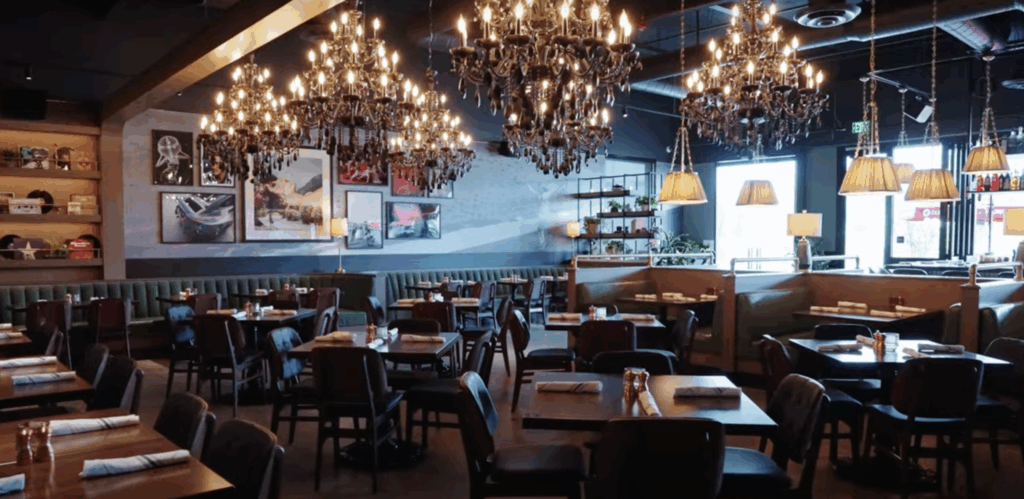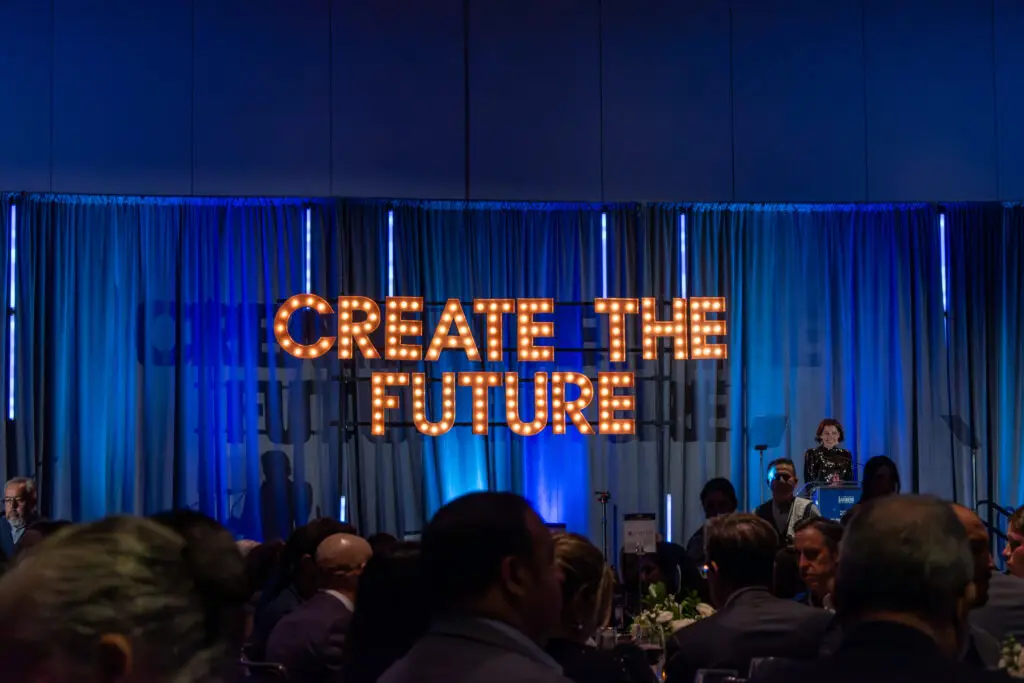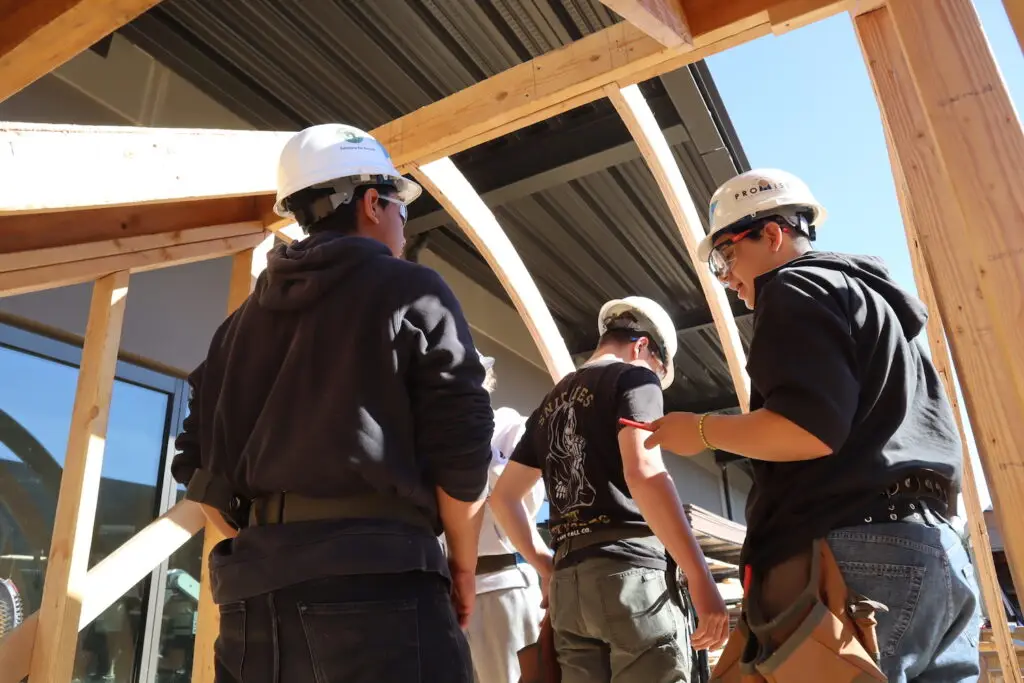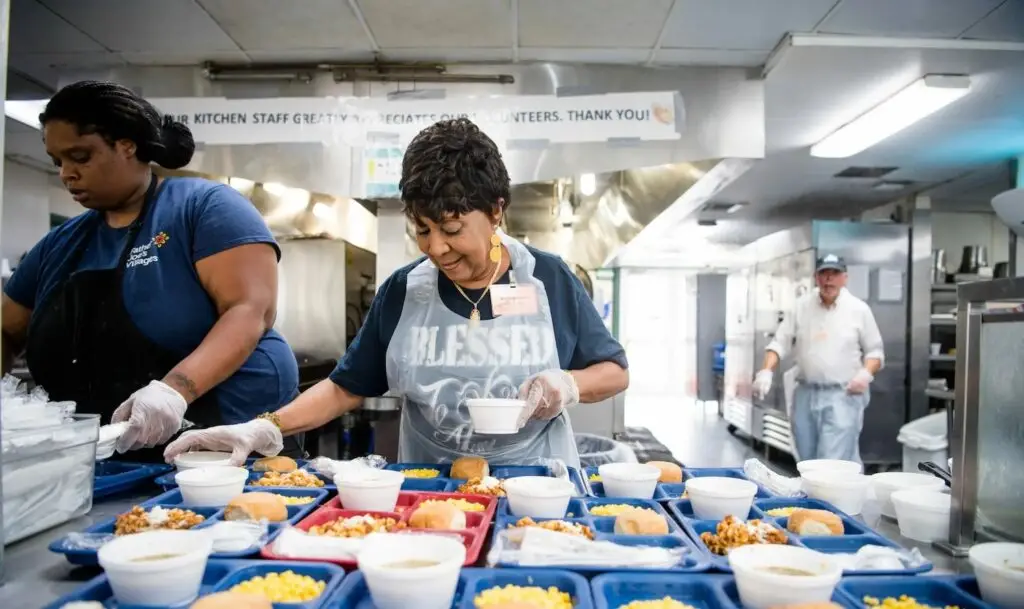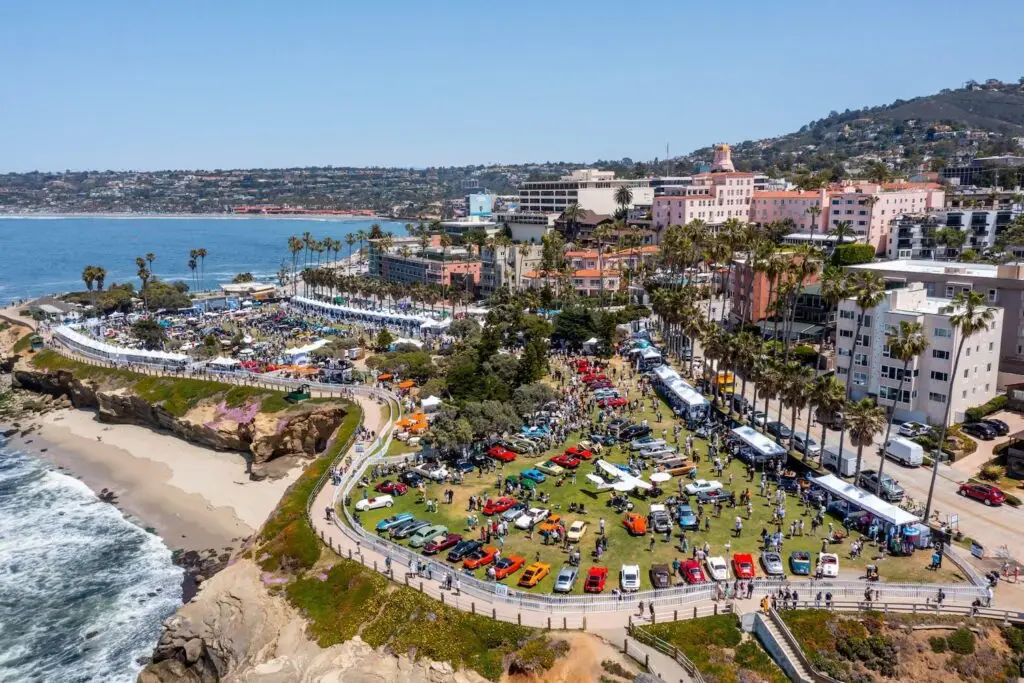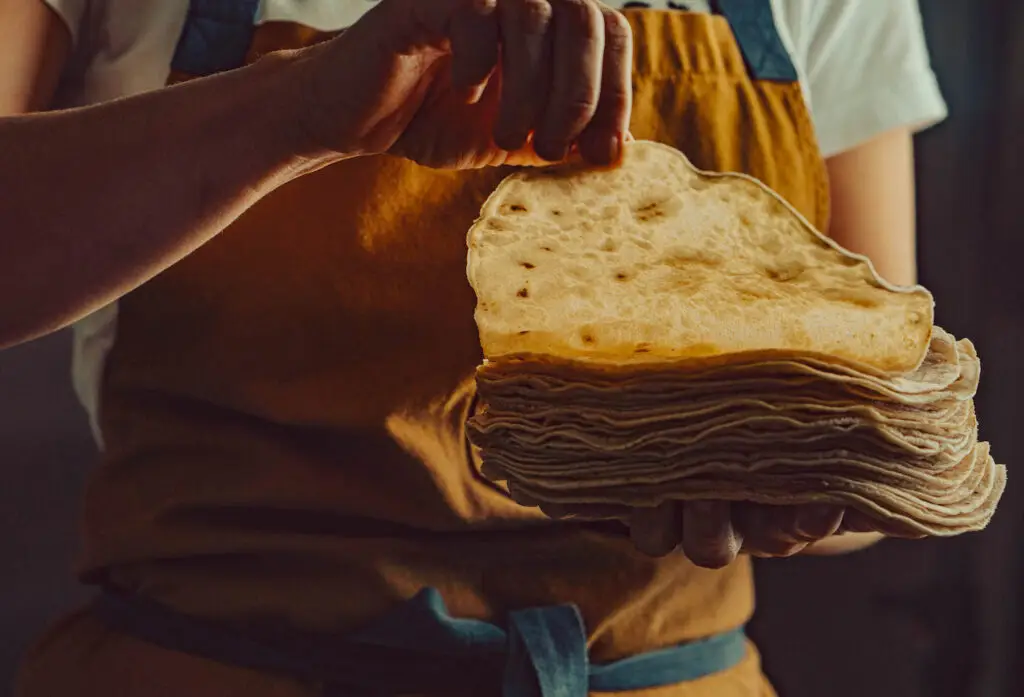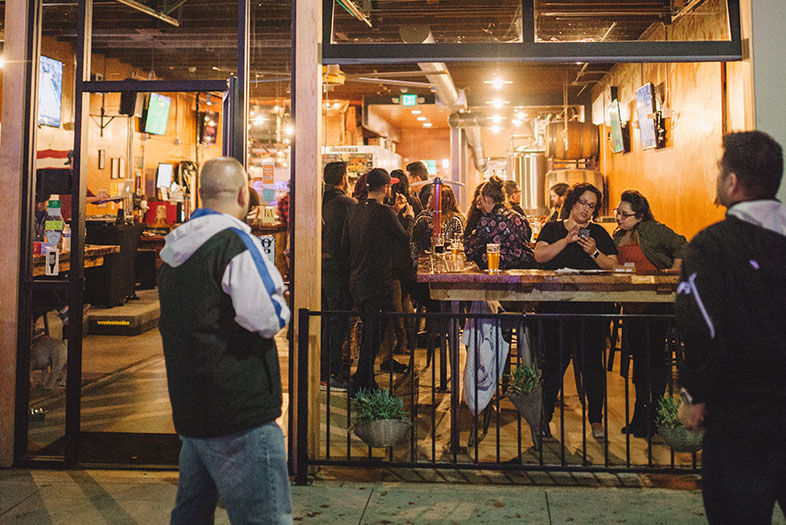Chula Vista is dominating the beer scene.
Forget about a name—there isn’t even a sign marking Chula Vista’s Bar Sin Nombre. But like the city’s nascent beer scene, it does have one thing: a following. “People here used to have to go to North Park, South Park, or the East Village to get decent beer,” says Tony Raso, the Chula Vista native who opened the bar last November. “Now on Friday and Saturday we get crushed by people from North Park looking for beer they can’t get at Toronado. It’s kind of created this reverse-commute thing.”
“Reverse” is an apt word. In little more than a year, 3 Punk Ales Brewing, Chula Vista Brewery, and Groundswell Brewing have all opened on Third Avenue. Add to that list a wine bar and a new location of the burger joint Balboa Bar & Grill, and you’ve got yourself a barhopping scene.
On Saturday mornings, Christianne Penunuri, owner of Groundswell, rolls up the doors and looks across the street to see the eponymous three punks doing the same. “It’s like, hey neighbor!” she says. “It feels like a small community. Everybody knows each other.” That’s saying something, considering that at more than 250,000 residents, Chula Vista is the county’s second-largest city.
Chula Vista doesn’t skew as young and single as other beery destinations, but that doesn’t seem to be a problem. “Families need a place to go and blow off steam and visit and get together with their community,” Penunuri says.
“What was a sleepy little block is starting to find its stride,” Raso says. “The bars and restaurants are creating this walkable neighborhood feel. The foot traffic in the last year is up 1,000 percent. Families, young people—things you never used to see.”
Bar Sin Nombre
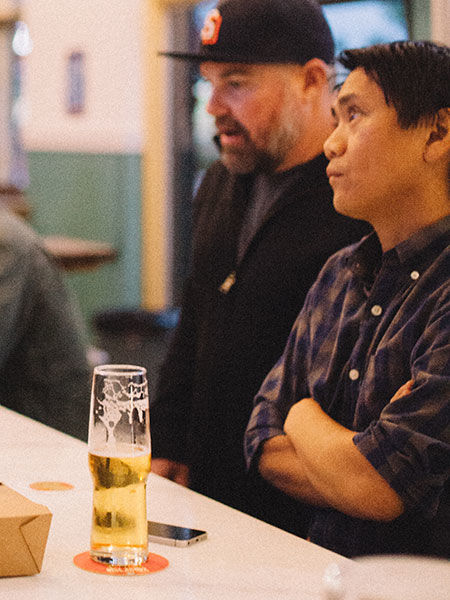
The Coolest Things Happening in San Diego Beer Right Now
If one end of the tap-selection spectrum is exclusively local brews, Chula Vista’s Bar Sin Nombre is at the opposite end. Owner Tony Raso is known for tracking down highly coveted beers that are nearly impossible gets.
“My list is my personal favorites, and focused heavily on imported beers,” he says. “We try to keep it accessible, always with some local beers so it’s not completely Greek to them.”
Raso’s taps are often the only ones pouring that brew in San Diego—or even in Southern California. His past work with a distributor in Hawai‘i has led to him to getting first dibs on many small-batch beers, some of which might be too out-there for mainstream bars but just right for Raso.
Sour beer from Jolly Pumpkin Brewery out of Michigan? A selection from De Garde Brewing in Tillamook, Oregon? He’s featured them, always beside predominantly “bone-dry, session-able” beers, a couple dozen sours, a few pilsners and hazy IPAs, and a couple of ciders.
As Raso puts it, “I’m just trying to pour the very best beer list in the world.”
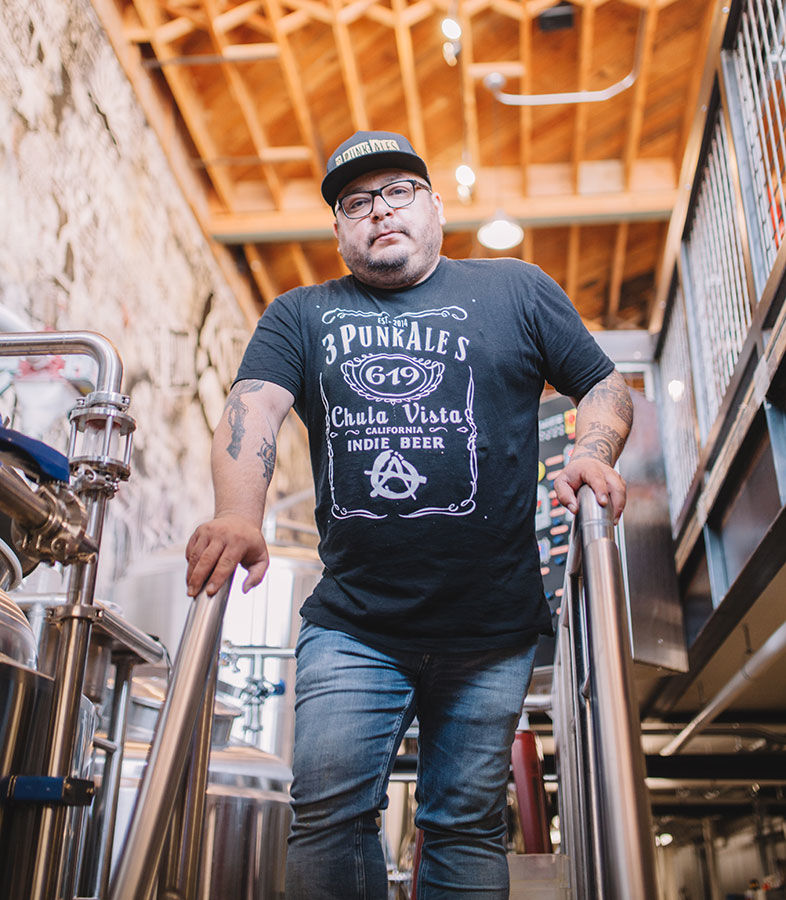
The Coolest Things Happening in San Diego Beer Right Now
Ivan Maldonado
Ivan Maldonado is revolutionizing beer on both sides of the border.
Craft beer is one of the few things that doesn’t often cross the border with Mexico. Ditto for craft brewers. The lone exception—the one brewer with a foot in the beer world of both countries—is Ivan Maldonado, head brewer at the fledgling 3 Punk Ales Brewing in Chula Vista. Maldonado also makes 30 barrels a month at Silenus Cerveza Artesanal, his Tijuana microbrewery that distributes throughout Mexico.
“Nobody else really works on both sides,” says the 36-year-old, who grew up between California and Baja. After attending high school in Chula Vista, he moved to Tijuana and fell in with a crowd of home brewers. “One of the first clones we made was Sculpin IPA.” Maldonado had been in concrete laying since age 15, but left that trade in 2012 when he scored a keg-washing job at Coronado Brewing Company, and then an assistant brewer gig at Saint Archer.
His Tijuana-born cervezas occasionally make cameo appearances on San Diego–area taps. But whether here or there, Mexican craft beer can be hard to find. Politics, low wages, permitting, and competition from giants like Corona and Tecate make for a tough market, he says, but it’s budding.
“I see the craft beer scene in Mexico becoming a powerhouse in five to 10 years. A lot of people are experimenting. Mexico has so many fruits and herbs, the list of what you can use in a beer goes for miles.”
You can get a lifetime supply of beer.
Breweries are getting in on the loyalty program model. Newtopia Cyder, a newcomer in Scripps Ranch, has launched an annual membership program for 200 cider lovers. For $150, members get discounts, a stainless steel growler, invitations to members-only parties, and the feeling that they’re part of an exclusive club—at least for the one-year duration of the membership.
“Probably 80 percent of our members are residents,” says owner Jennifer Hays Moreno.
Farther south, more than 80 customers have paid $450 for a lifetime membership to Eppig Brewing’s new waterfront outpost (see page 106), which gets them special barrel-aged brews, exclusive bottle releases, members-only parties, and other boozy perks.Modern Times opens their own club to 1,000 members at $350 each, and extends their perks to those living outside of San Diego—they offer pickup locations in LA and Portland.
“It’s a way to make a deeper connection with our guests,” says Stephanie Eppig, whose brewery is capping its memberships at 100. Those who’ve taken the plunge get to know their brewers at annual parties and other events. “They’re our friends now.”
Modern Times is going vegan (again).
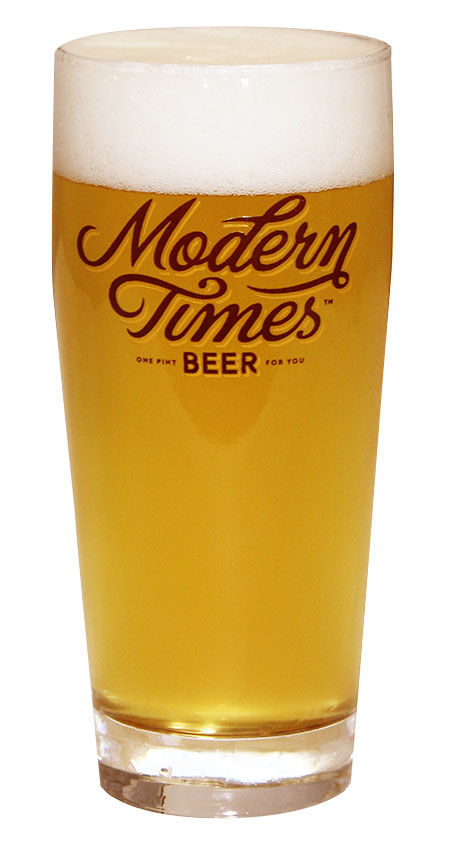
The Coolest Things Happening in San Diego Beer Right Now
Hoping to replicate its recent success with Dankness Dojo—a vegan restaurant and tasting room in downtown Los Angeles—San Diego–based brewery Modern Times is opening a new eatery in Encinitas. “I’ve wanted to open a place in North County for a long time, and we finally found the right location,” says Jacob McKean, CEO and founder. “It’s walkable, right next to transit, and the building is a sadly neglected structure we’re bringing back to life.”
Across the 101 from La Paloma Theatre and slated to open later this summer, The Far West Lounge will offer locals a plant-based menu that features some of the biggest hits from the LA restaurant and then some. McKean has been thrilled with the support in LA so far, describing the response as overwhelming at times: “We’ve been going through so much food, our distributor has had trouble keeping some things in stock. It’s a good problem.”
The beer selection at the new Encinitas restaurant will be similar to that of the brewery’s Point Loma flagship. It will also serve as the pick-up spot for special releases offered to Modern Times’ “reserve society,” dubbed The League of Partygoers & Elegant People.
Why the focus on vegan food? McKean himself has been vegan for over 20 years and wants to be able to eat or drink anything the company makes. “It also supports Modern Times’ mission as a whole,” he says, “which is not just to exist and make beer, but to leave the world better and weirder than we found it.”
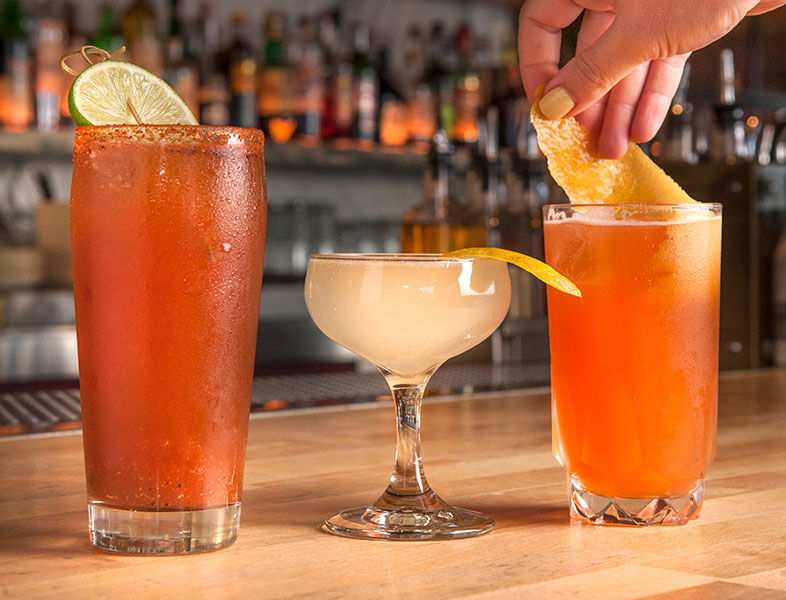
The Coolest Things Happening in San Diego Beer Right Now
From left to right: Secret Breakfast, French 75, and The IPA Cocktail | Photo: Paul Body
Beer cocktails are trending…
Until recently, the most common things to mix with beer—other than sunshine—were Clamato, lime juice, and salt. But local bartenders are changing that, going beyond the michelada to come up with creative beer cocktails. “It’s definitely picking up momentum,” says Rachel Clark, bar manager at Craft & Commerce, which has actually been serving beer cocktails for nearly a decade. Clark told us the secrets behind one of the most popular mashups she serves, as well as one of her favorites around town.
Create Your Own!
You might hear bartenders speak of “French 75 spec.” This refers to the proportions of one of the most classic cocktails of all time, the French 75, in which an ounce of gin and a half ounce each of lemon and simple syrup are topped with a pour of Champagne. Riffs on this theme often yield excellent beer cocktails, Clark says, so use it as a guide when you’re feeling inventive. “Don’t be afraid to mess up. It’s going to take making a bunch of crappy drinks first. Eventually you’ll have an a-ha moment where it’s just what you envision.”
French 75
- ½ oz. citrus
- ½ oz. simple syrup
- 1 oz. spirit
- Top with beer or cider
Secret Breakfast
When she’s not working at C&C, you’ll probably find Clark sipping one of these beer cocktails at Soda & Swine in Liberty Station. The secret is one ounce of bourbon and a half ounce each of lemon juice and honey; S&S bartenders top it with five ounces of Cali Creamin’ from Mother Earth Brew Co. Just hard shake all ingredients minus the beer with cubed ice, then top the shaker with the beer to blend.
- 1 oz. bourbon
- ½ oz. lemon juice
- ½ oz. honey
- 5 oz. Cali Creamin’
The IPA Cocktail
This lovely mashup from C&C infuses one ounce of Aperol with a half ounce each of Aperol and lemon or grapefruit juice, but in a pinch you can simply shake the cocktail with citrus zest instead. Clark most often tops this with five ounces of AleSmith Brewing Company’s IPA, but any IPA will do. “Once in a while we’ll do it with a double or triple IPA. It’s dangerous on a hot day, but delicious.”
- ½ oz. lemon juice
- ½ oz. orgeat
- 1 oz. Aperol
- 5 oz. IPA
…and so are sours…
Blame it on modern brewing practices. When brewers figured out how to make beers “clean”—to banish naturally occurring bacteria, and ferment them using only specific kinds of yeast—they also banished the sour flavors that had characterized beer since antiquity. The easily controlled taste of clean brews allows for flavors to come through without the feeling of having Sour Patch Kids in your cheek.
But local brewers are increasingly inviting lactic-acid-producing bacteria—the very same ones responsible for kombucha, yogurt, and sauerkraut—to mingle with the yeast (and sometimes fruit) to funk things up a bit. As long as the FDA isn’t eavesdropping, you could just as well call sour beers probiotic. Their tangy, fruity flavors are the result of more variables in the brewing process than clean beers, like using multiple strains of yeast. “It’s a much more complex fermentation, and harder to know how everything is going to interact,” says Jeff Crane, head brewer at Kearny Mesa’s Council Brewing.
This souring of local taps seems part of a larger trend toward more complex flavors—much like how hop fatigue is leading brewers to reinvent subtler styles, like Mexican lager and pilsner. As Tony Raso, owner of Chula Vista’s Bar Sin Nombre, puts it, “As your palate and pocketbook develop, you tend to go toward things that are drier and more tart.”
Council, which just opened a tasting room in the former home of Finest Made Ales in Santee, was among the first in San Diego to produce sours four years ago, when just about all of them were imported and hard to find. “A few American breweries were making it, but there was concern of contaminating the rest of your brewery,” Crane says. Council broke with the pack by dedicating equipment and resources to making sour beers.
“We started focusing on it and pumping out pretty good quantities of it. That kind of gave us a name. That’s what people were buying, so we kept making it.”
Jeff Crane’s Local Sour Picks
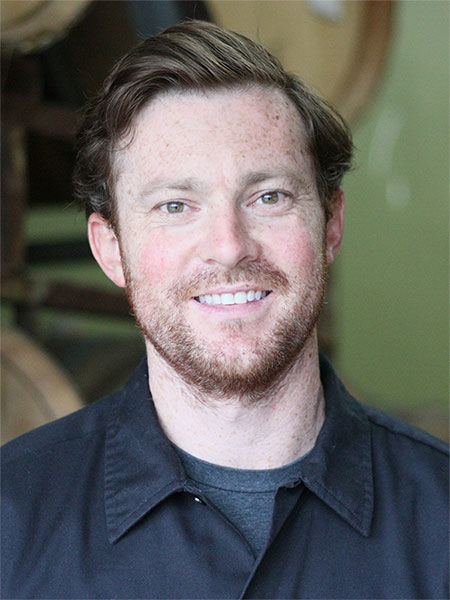
The Coolest Things Happening in San Diego Beer Right Now
Lost Abbey Carnevale
“There is no acidity, because they don’t add lactic acid bacteria to this one. The aroma has both the fresh and earthy smells of spring captured in one place.”
Modern Times Fruitlands
“This beer uses a technique called ‘kettle souring,’ which uses the Lactobacillus for souring, but then boils the beer afterward. And it’s in a can!”
Council Brewing Nicene Saison
“Another tart saison, but one that’s been aged in used white wine barrels, allowing the wine flavor to infuse into the beer. A good introduction for wine lovers venturing into beer.”
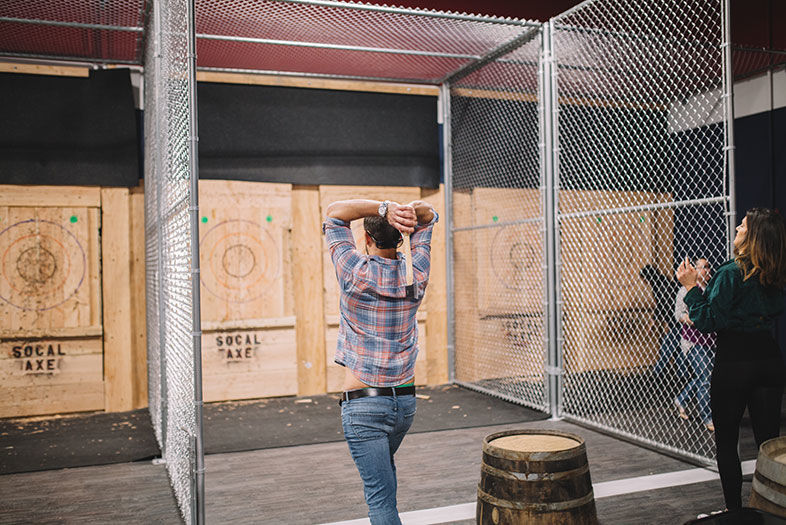
The Coolest Things Happening in San Diego Beer Right Now
…and so is axe throwing.
Wild Barrel Brewing Company, the 15-barrel brewhouse that recently opened in San Marcos, takes the bar to the next level with axe throwing and batting cages. Batter (and beer) up!
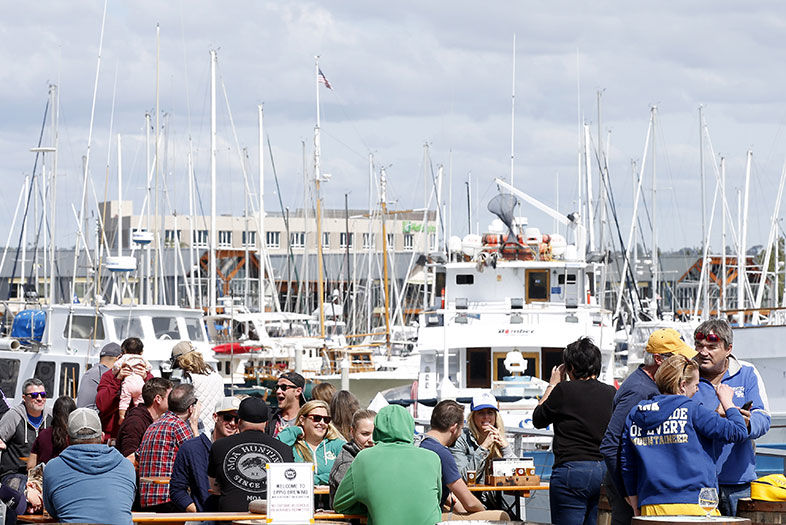
The Coolest Things Happening in San Diego Beer Right Now
Photo: Todd Warshaw, Eppig Brewing
The bay finally has a tasting room.
It’s hard to believe that until recently, San Diego had no brewery tasting room on the bay. Eppig Brewing remedied that in February, when they cut the ribbon on their new Waterfront Biergarten, nestled among the yachts at Intrepid Landing Marina. The spacious 2,000-square-foot patio—with heaters and sun shades—offers vistas of America’s Cup Harbor and the downtown skyline beyond. The black lagers and IPAs this North Park brewery is known for flow from 20 taps beneath a tall, slanted ceiling, while the exterior evokes shipping containers.
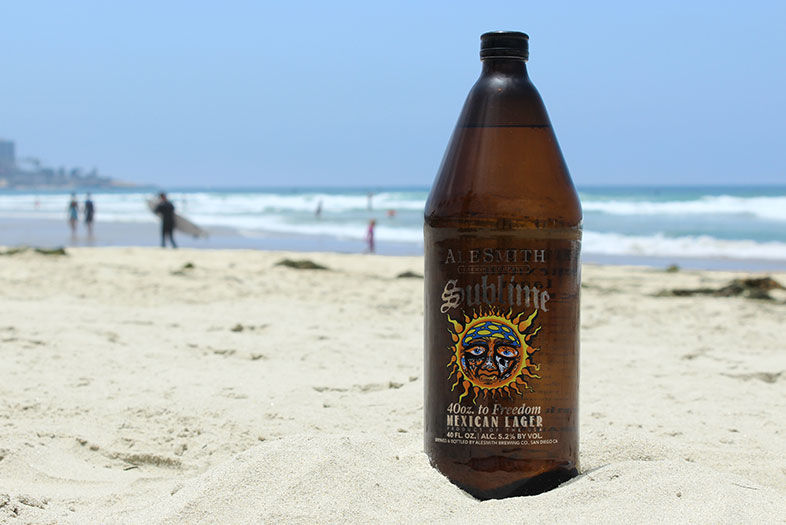
The Coolest Things Happening in San Diego Beer Right Now
AleSmith’s Sublime Mexican Lager
Mexican lagers are hip again.
If you’ve ever downed a Corona, you’ve tasted Mexican lager. You probably haven’t had one like local craft brewers are turning out lately, though, since many only recently fell for this super-quaffable style. “I always felt like lagers got a bad rap because the big boys make lagers,” says 3 Punk Ales’ Ivan Maldonado. “A lot of us were like, why can’t we make them the way we know how?”
Derived from Vienna lagers, at some point the Mexican variant morphed into the inexpensive yellow suds that pair so impeccably with tortilla chips and lime. There’s no strict definition of what makes a Mexican lager; slightly hoppy with a dry finish, they’re faintly sweet with no trace of fruity esters. Macrobreweries may brew them with corn syrup to impart the lager’s characteristic hint of toasted maize, but craft brewers stick to adding flaked corn into the mash.
Local varieties include 3 Punks Ales’ La Flama Blanca Pale Mexican Lager, AleSmith’s Sublime Mexican Lager, and SouthNorte’s Sea Señor Mexican-Style Lager.
“In San Diego, we went through the whole awkward adolescent phase of big, bold, in-your-face beers,” says Bar Sin Nombre’s Tony Raso. “We’re finally coming out of the funk of trying to make the craziest beers.”
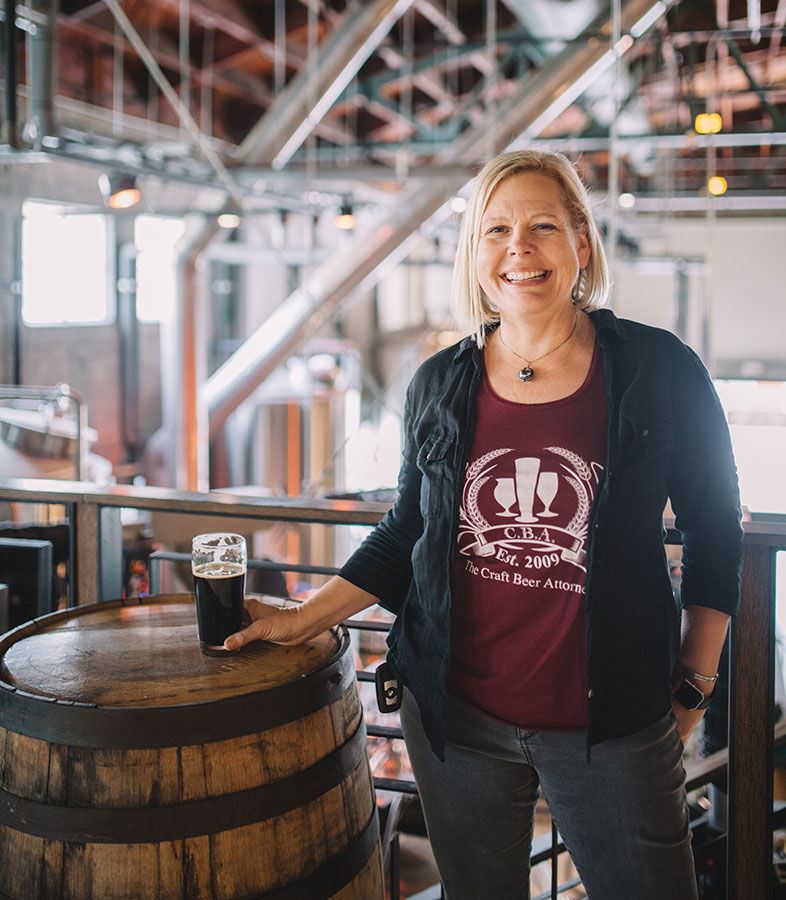
The Coolest Things Happening in San Diego Beer Right Now
Candace Moon
We have an actual craft beer lawyer.
Craft beer is a highly regulated industry, and one with specific needs that are different from that of, say, the wine industry. Few people know this better than Candace Moon, San Diego’s own craft beer attorney, who handles everything from trademarks and licensing to complicated business issues for about 350 clients across the country.
As a bartender at Hamiltons Tavern while she was in law school, Moon got to know a lot of local brewers. After graduating, she didn’t really know what she wanted to do with her degree, so she stuck to what she knew—bartending. Then, at an industry event, she had something of an epiphany.
“I met a wine lawyer and a lightbulb went off,” she says. “I knew a lot of brewers, but I didn’t know of any lawyers that specialized in their specific needs, so I decided to become a craft beer lawyer.”
Moon launched her solo practice in 2009, and the demand for her services grew exponentially. She recently closed her practice and joined Dinsmore & Shohl’s Beer, Wine and Spirits Practice Group, which represents alcoholic beverage producers across the world.
Most of Moon’s clients are in California, and “quite a few” are in San Diego. “I’d say at some point, I’ve worked with almost every brewery in town on some issue, and some breweries more than others,” she says. Her first San Diego client was Monkey Paw. “I had worked for Scot Blair at Hamiltons and he was kind enough to give me a shot early on.” Some other notable local breweries she’s worked with include Green Flash, Alpine, AleSmith, and Mother Earth, but by far her favorite request to date was “a client asking how they would get federal formula approval for a beer recipe that included breast milk.”
Being a craft beer aficionado herself, Moon was expecting some perks to come with the job. “I did think I would get more free beer,” she says. “But since everyone pretty much pays their bills, I can just buy the beer.”
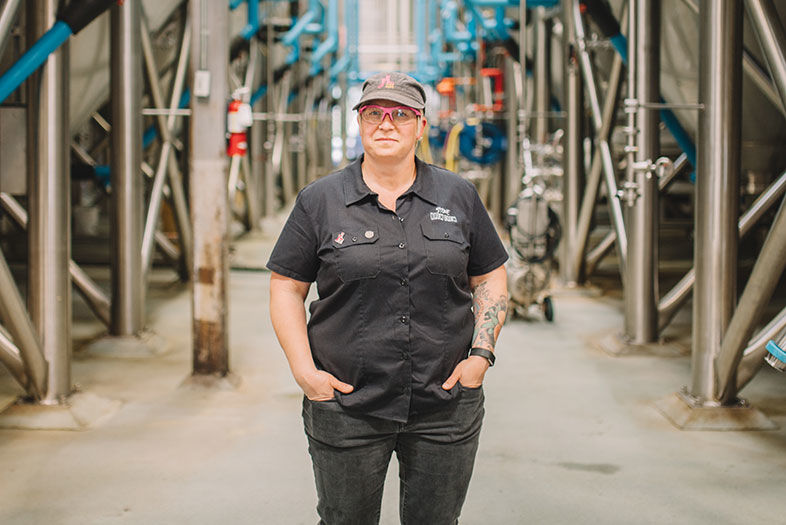
The Coolest Things Happening in San Diego Beer Right Now
Brewer Laura Ulrich, president of the Pink Boots Society at Stone Brewing World Bistro & Gardens
San Diego women brewers are kicking ass.
From Melani Gordon, cofounder of Taphunter, to Jill Davidson, president emeritus of the San Diego Brewers Guild, San Diego’s craft beer industry is full to the brim of high-profile women doing big things. One of them is Laura Ulrich, small-batch brewer at Stone and president of the Pink Boots Society, which aims to empower women in brewing. Since its inception 10 years ago, the society has grown from a hobby organization to a fully professional one, offering scholarships, education, and support to its 1,600 members worldwide. And it all started right here in San Diego, one Saturday in June 2007, when founder Teri Fahrendorf paid Ulrich a visit at Stone.
“When I met her, I was immediately amazed that she had been a brewer for so long,” Ulrich says of Fahrendorf. “I was unaware that women did this as their careers, and I picked her brain the entire day. So much so, that after my shift I invited her to dinner. That’s when she spoke about the idea of starting Pink Boots Society.”
At the time, Ulrich was a young brewery employee who barely knew any other women in the industry. Fahrendorf was the third female craft beer brewmaster in the country; she’d spent 19 years at Oregon’s Steelhead Brewing before setting out on a brewery tour across the United States. Meeting her was an eye-opener for Ulrich, who worked her way up from the bottling line to brewer and just celebrated her 14th anniversary with Stone this year.
“The following year, we held our first meeting here in San Diego during the Craft Brewers Conference,” Ulrich says. “We started with just an Excel sheet, tracking women that way.”
Today, the Pink Boots Society is a registered nonprofit with a membership database and chapters in 10 countries. But the San Diego chapter remains the largest and most active. The organization celebrated its decennial with a beer festival at Liberty Station on June 3, 2017; Mayor Kevin Faulconer declared it Pink Boots Society Day.
While the nonprofit’s main focus is scholarships and education, there’s also a networking aspect that helps women in the industry connect with one another around the world. “If I wanted to reach out to get advice or recommendations,” Ulrich says, “I know I have an entire network of women that I can look to.”
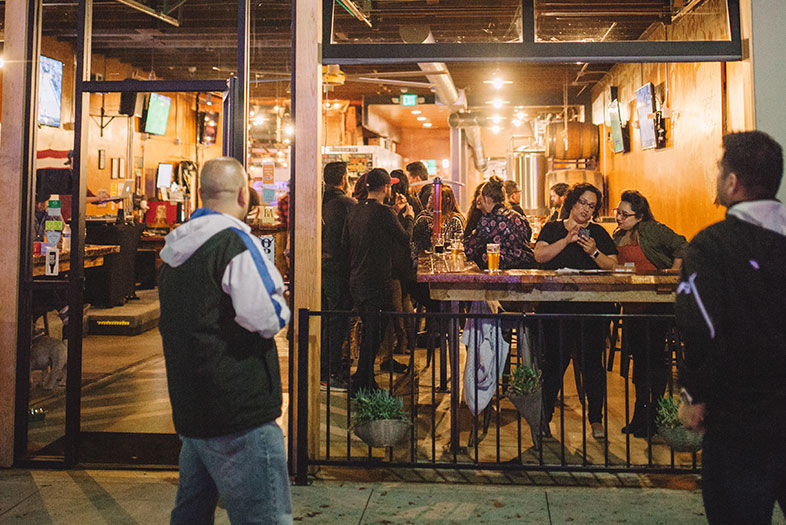
The Coolest Things Happening in San Diego Beer Right Now
Chula Vista Brewery
